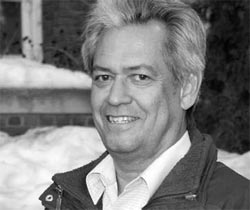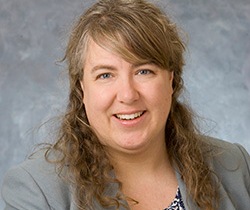
Dr. Locksley McGann
Edmonton-An interdisciplinary research team at the University of Alberta that contributed to the development of technology to cryopreserve (store at low temperature) cartilage for transplants has received a grant over $604,000 for continued research on the cryopreservation of cells and tissues.
A multidisciplinary team at the University of Alberta is the first in the world to cryopreserve intact articular cartilage on bone. The team includes: Locksley McGann, professor emeritus, laboratory medicine and pathology; Janet Elliott, professor and Canada Research Chair in Thermodynamics, department of chemical and materials engineering, and Nadr Johma, associate professor, department of surgery, along with other contributors. The US patent has been granted and the Canadian patent is pending, after 15 years of working together.
The Canadian Institutes of Health Research (CIHR) grant was announced yesterday at a press conference held at the University of Alberta as part of the $26 million granted to support 42 innovative research projects led by U of A scientists.
"I didn't even know the word cryobiology when I first met Locksley 17 years ago, but since then we have co-supervised more than 30 research trainees working on cryobiology," Elliott says. "Our students have won best paper awards at the International Society of Cryobiology annual meetings more times than any other research group, and our thermodynamics equations are recognized around the world"
The science of cryobiology is the study of living systems exposed to low temperatures down to -196 degrees Celsius. Cryobiology is central to research in much of biology and medicine. McGann and Elliott's research spans from mathematical equation development to clinical translation for multiple cell and tissue types with engineering students and medical researchers working together in the same lab. Four of the students co-supervised by McGann and Elliott have graduated from, or are currently enrolled in, U of A joint graduate degrees in both Engineering and Medical Sciences.
"Biology relies on the ability to purchase cells for research, but only cells that can be cryopreserved are available for purchase," McGann explains. "Tissue transplantation is impeded by the inability to cryopreserve tissues and biotech companies report spending 20% of development costs on developing cryopreservation procedures, but some simply don't succeed."
At low temperatures, most biological processes slow down and as suspended cells are cooled, ice forms in the solution surrounding the cells. Elliott explains that thermodynamics tells us at what temperatures ice forms and how much ice is formed at a given temperature. As ice concentrates the solution around the cells, water moves across cell membranes and cells shrink to as little as one-third of their original size. To mitigate how much ice is formed, cryoprotectants like ethylene glycol (a component of antifreeze used in windshield washer fluid) are added; the toxicity of cryoprotectants is reduced at extremely low temperatures. Thermodynamic equations predict the processes and inform which cryoprotectants should be added and at what time and in what quantities in order to cryopreserve the cells with as little damage as possible.
"Cryopreserving articular cartilage was a hard problem and our complex protocol could never have been found by trial and error, but required mathematical modeling, biological experiments, and surgical knowledge, and 15 years of research to achieve" Elliott says. "We anticipate that in the near future, the University of Alberta will be home to the world's first cryopreserved articular cartilage transplant program."
The CIHR operating grant will allow McGann, Elliott, and their co-Investigators: John Nychka (associate professor in chemical and materials engineering) and Richard Thompson (associate professor in biomedical engineering) to apply the knowledge from cryopreserving articular cartilage to the challenge of preserving corneas, the clear tissue covering the eye, for use in transplantation.
"If we can't cryopreserve tissues, we can't conduct research and transplant patients can't get the tissues they need. Our future research could help lower the waiting times for patients who need transplants once we are able to cryopreserve corneas," said McGann.
